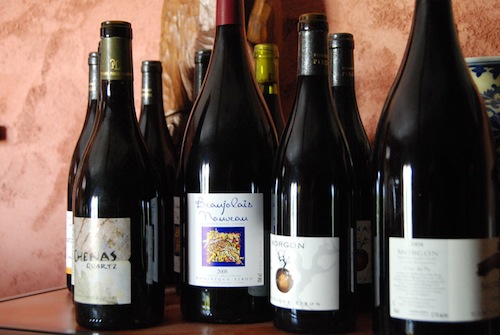 If you ran out to buy Beaujolais Nouveau 2011 for your Holiday festivities and were confounded by all the bottles that said “Beaujolais,” here’s a cheat sheet on the different kinds of Beaujolais.
If you ran out to buy Beaujolais Nouveau 2011 for your Holiday festivities and were confounded by all the bottles that said “Beaujolais,” here’s a cheat sheet on the different kinds of Beaujolais.
Translations:
Beaujolais
This comes from somewhere in Beaujolais.
Beaujolais-Villages
This comes from grapes grown in any of 30 or so designated villages. These villages supposedly produce higher quality grapes than the rest of Beaujolais.
Cru Beaujolais
Of the villages that make up Beaujolais-Villages, ten are recognized as being the best. The villages are Brouilly, Cote de Brouilly, Regnie, Morgon, Chiroubles, Fleurie, Moulin-a-Vent, Chenas, Julienas, and Saint-Amour. A wine made from the grapes from one of these villages is called a Cru Beaujolais, and the AOC label will name the village.
What’s Good:
In general, any Beaujolais-Villages or better is decent wine. Since the price difference between Beaujolais-Villages and Beaujolais is minimal, it’s worth it to start at this level. Even so, village-level Cru Beaujolais is still fairly inexpensive, and extremely affordable for sampling and experimentation.
The Beaujolais Nouveau is typically less than remarkable, but it’s always cheap and festive. A good Nouveau, however, bodes well for the coming year of “real” Beaujolais. It doesn’t age well, so you should strive to drink it as soon as possible.
Georges Duboeuf is easily the region’s largest producer and is often called “The King of Beaujolais” for both his market dominance and aggressive international marketing. Duboeuf and Louis Jadot produce consistently good wine and are always excellent buys. Duboeuf’s style tends to be somewhat livelier and fruitier, while Louis Jadot is more complex and serious. You will be able to find both of these almost anywhere in the United States.

